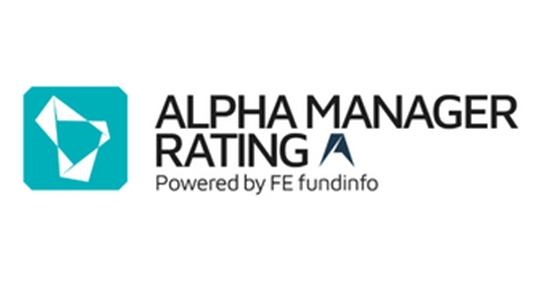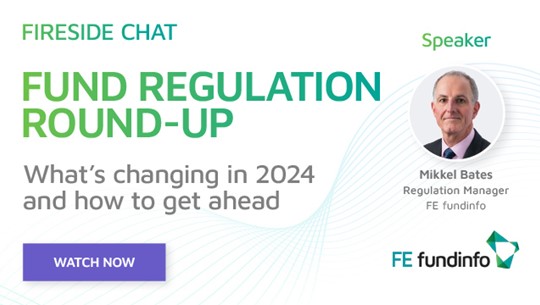Read below for the transcript or watch the video:
What is the UK’s answer to the EU’s SFDR?
To answer that, I’d first like to take a step back and look at what the SFDR is. What has come to be known as the SFDR actually consists of two linked regulations: the Sustainable Finance Disclosure Regulation itself and the Taxonomy Regulation.
I think most people are becoming familiar with what a taxonomy is now, if they weren’t already aware. The EU’s ESG Taxonomy is a classification system that sets out which economic activities are classed as sustainable, based on six environmental objectives. The first two of these – climate change mitigation and climate change adaptation – are already live, while the other four – protection of water and marine resources, transition to a circular economy, pollution prevention and control, and restoration of biodiversity and ecosystems are due to be included in disclosures from next January.
Then we have the SFDR itself, which wasn’t intended to be a classification system, but sets out the disclosure requirements for financial companies, advisers and financial products, depending on how green those products claim to be. As a result, it has turned into a de facto classification system and everyone has seen references to Article 6, 8 and 9 products.
But in case anyone isn’t sure of the precise differences, Article 8 products claim some environmental or social characteristics, so they might be branded as green or sustainable or have a screening or exclusion policy; Article 9 products have sustainable investment as an objective, so this includes things like impact funds; and Article 6 products are the rest, in other words they are not marketed as green or sustainable, although they may still take sustainability risks into account.
I won’t go into the minutiae of all the disclosure requirements, as they depend on whether you are a product provider or an adviser and whether the product is an Article 6, 8 or 9. And there are several deadlines, principally because the SFDR came into force last year without any level 2 regulatory technical standards to provide the detailed prescriptions.
But there are some important dates everyone needs to be aware of. The first high-level entity and product-level website disclosures kicked in on 10 March last year. And companies with more than 500 staff then had to start publishing their policies on principal adverse impacts at the company level from 30 June. Pre-contractual and periodic disclosures for Article 8 and 9 products in respect of the first two objectives in the Taxonomy have been required since the start of this year, and then the other four objectives and use of the templates set out in the Level 2 regulatory technical standards are due to join them at the beginning of 2023.
So, in a nutshell, that’s the EU side of things.
Although the UK rules have not yet all been finalised, there have been three important documents published here so far.
The first of these was the Treasury’s Roadmap Towards Mandatory Climate-Related Disclosures at the end of 2020, which set out a phased approach for listed companies, banks, insurance companies, asset managers and pension schemes to report their alignment with the recommendations of the Taskforce for Climate-related Financial Disclosures, or TCFD, starting with the largest companies and eventually covering almost the whole market.
Then, last summer, the FCA built on the Treasury’s Roadmap by publishing its consultation paper on TCFD-aligned disclosures for asset managers and asset owners (which are essentially insurance companies and pension funds), which said its aim was to “increase transparency and enable clients and consumers to make considered choices” with entity and product-level disclosures for all firms with over £5bn worth of assets.
And finally, towards the end of last year, the FCA published its discussion paper on Sustainability Disclosure Requirements and product labelling, which took this further, focusing on its commitment to transparency and consumer trust in ESG disclosures. Known as the SDR, it sums up to me the approach taken by the UK – it sounds almost the same as the SFDR and has similar goals of disclosure and product classification, but it isn’t quite the same when you look more closely.
How does the UK SDR differ from the EU SFDR?
Probably the most fundamental difference between the UK and the EU rules doesn’t affect the actual disclosure because it’s the intentionality. The EU’s stated aim has been to redirect capital into sustainable investments, while the FCA’s rules are concerned with providing “decision-useful” information to investors who want to consider sustainability in their investments and to improve transparency. Of course, both of them also say they expect to combat greenwashing.
Interestingly, even last year’s FCA consultation on TCFD-aligned disclosures didn’t mention anything about redirecting capital to sustainable investment among its three targeted outcomes. What it was after were better outcomes for investors through greater transparency, deeper consideration of climate-related risks and opportunities by investing firms, and more co-ordinated information flow along the value chain.
The SDR covers entity and product-level disclosures in three ways. There would be reasonably high-level key information disclosures for retail investors and more granular disclosures for institutional and sophisticated investors. And all of this would be supported by a product labelling system that shows how far along the spectrum a fund sits, from traditional at one end to impact at the other. Unlike the European eco-labels, some of which have been around for many years, these labels in the UK would apply to all investment products, not just those looking to promote their ESG credentials, as the spectrum includes products with no ESG characteristics at all.
Fortunately, the FCA has brought together a group of industry practitioners for what it calls its Disclosure and Labelling Advisory Group, or DLAG, because the initial labelling proposals included things like identifying those products that invest in companies that are transitioning to taxonomy alignment, which we and others felt needed quite a bit of reworking to make them meaningful and user-friendly.
And, of course, the taxonomy they would need to align to wouldn’t be the EU taxonomy, but would be a UK green taxonomy, which doesn’t exist yet. All we know is that it will be based on the EU taxonomy, but it won’t be identical. A proliferation of taxonomies – different definitions of what economic activities are deemed to be sustainable in different countries – could definitely make things challenging for asset managers.
What do UK asset managers need to do to ensure compliance? And what are the deadlines?
The good news for the UK, if you can call it that, is that none of the SFDR or Taxonomy requirements came into effect until after the UK “got Brexit done”, so the UK has gone its own way and has very different requirements.
As I’ve already said, the UK has adopted the TCFD recommendations as the disclosure benchmark. Larger asset managers – with over £50bn under management – have needed to start considering their TCFD alignment, greenhouse gas emissions and carbon footprint since the start of this year, with a view to reporting on them by the middle of next year. But only at the beginning of April did it become a legal requirement for the largest UK or private companies to provide the data themselves, so asset managers will have struggled a bit. And that’s before we start worrying about disclosures by non-UK companies.
Smaller asset managers, down to those with £5bn under management, will be brought into the net from the start of next year, producing their first reports a year later. So hopefully, by that time, corporate disclosures will be a bit more forthcoming.
The SDR discussion paper also introduced a plan to replace the TCFD recommendations with the recently-established ISSB – the International Sustainability Standards Board’s – corporate reporting standards as the baseline when they are fully adopted, as they will cover more than just climate-related disclosures. The ISSB was set up by the IFRS Foundation at the end of last year, to coincide with COP26, and is currently consulting on its first two sets of standards. The plan is for them to be in place by the end of this year.
In terms of product labels, we’ll have to wait and see what the DLAG can persuade the FCA to come up with, but the plan was for a consultation paper on the FCA’s proposals to be published sometime in Q2 of this year.
What do UK distributors need to do? Do the deadlines align?
In the SDR discussion paper, the FCA acknowledged the important role played by advisers and distributors in getting the disclosures from companies and funds to the end investors, but said it would revisit proposals for advisers in due course.
It did give a hint about what that might entail, as the DP said its aim was to ensure advisers take sustainability matters into account in the advice process and understand investors’ sustainability preferences to ensure suitability, which is very close to what European distributors will need to start doing from August this year under changes coming in to MiFID II.
But as things stand now, there is no firm date when UK advisers and distributors need to start taking clients’ sustainability preferences into account. From our own research with advisers, it would seem that these conversations are becoming a bit more frequent, even if they are not mandated, so maybe by the time they are required, they will be a standard part of the client journey anyway.







